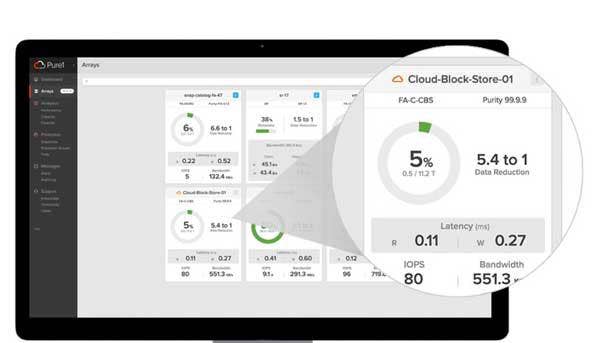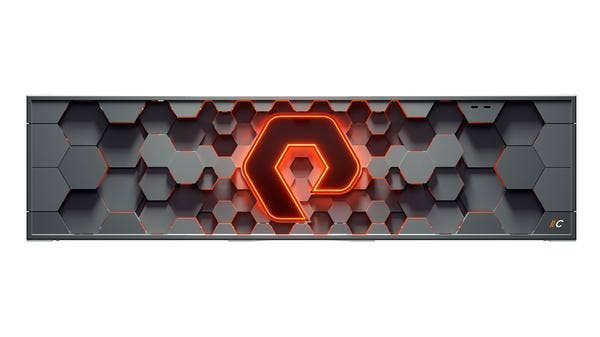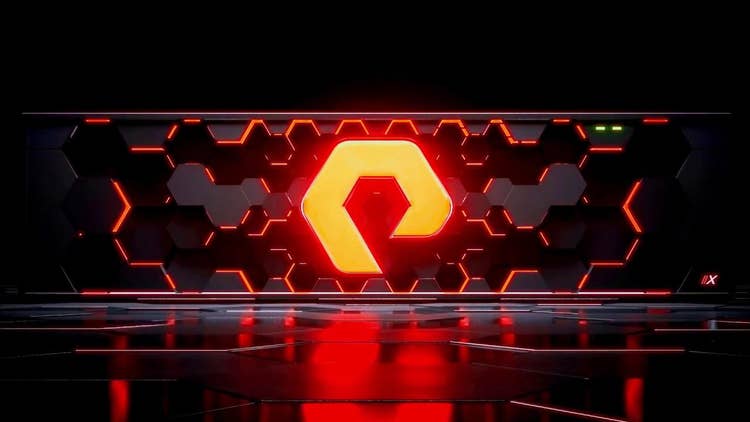Pure Storage CEO Charles Giancarlo On Investing Heavily To Tie On-Prem To Cloud
Pure Storage CEO Charles Giancarlo tells CRN that the company's investments in software are paying off by giving customers cloud-native data management capabilities that work across on-premises infrastructures and the major public clouds.

Cloud Becomes Driving Force For Storage "Hardware" Vendor Pure Storage
Pure Storage is known as one of the top producers of all-flash storage hardware. But the real drive behind the company is software. Indeed, as Pure Storage CEO Charles Giancarlo tells CRN, the company ships software "encased in iron" via its FlashArray and FlashBlade lines. And that software also runs natively in the cloud to provide customers choice in how they want to handle their block data requirements.
The company's software helped drive Pure Storage's recently released full fiscal year 2020 financials that had the firm reported revenue of $1.6 billion, up 21 percent over last year's revenue of $1.4 billion, and reported its second full year of non-GAAP profitability, although GAAP profitability remains elusive for now.
Giancarlo recently sat down with CRN to look at the importance of the company's investment in software engineering, how it differs from its competitors, and a little peek at what to expect in the near future on the software side.
For an understanding of what this all means for Pure Storage, turn the page.

2020 was Pure Storage's second year of profitability, right?
Both fiscal 2019 and 2020 were profitable on a non-GAAP basis. I believe they're both unprofitable on a GAAP basis, largely due to stock-based compensation. As you know, that's not unusual for Silicon Valley companies.
So how important is it for Pure Storage to show at least non-GAAP profitability now for two years in a row?
I think it's important to show we're a disciplined company. That despite the fact that we're growing very fast, we can run a profitable operation now. Of course, we do choose to invest more of it in our growth. We're not like a well-established organization that has low growth that is putting most of it on the bottom line. We're reinvesting most of our free cash flow and profits back into the business, and in particular, in R&D. We'll spend this year about 18 percent of our revenue on R&D, which is the highest in the data storage industry, because we believe that data storage is a high-tech business. And of course, from a customer standpoint, that's what you want to see, right? The customer wants to know that their supplier is investing effectively in their future.

When you talk about investing in R&D, what specifically are you talking about?
Let's talk about the fruits of what the investment has already provided. You got the update on the FlashArray//x, our third release, what we call r3, that's coming out. It's the seventh generation of FlashArray. That same software, which we call Purity, operates on FlashArray//x, on FlashArray//c, on FlashArray with the storage class memory for very, very high performance. It operates on FlashBlade. And it's the same software that operates on Cloud Block Store, which we released on AWS last year, and which we just released into beta for Azure [last month], as a matter of fact. And so, it's that kind of delivery of new capabilities, that kind of investment. And more importantly, being able to invest in a modern software construct like Purity, and [having] everything managed by Pure1, it allows us to be efficient with our investments as well.
It's interesting when I asked you about the investment, you mentioned Purity and Pure1. You've said that Pure Storage is a software company, even though you sell hardware. What do you mean by that?
Ninety-five percent of our engineers are software developers. And so we ship that software encased in iron, that is, it's a FlashArray or a FlashBlade, unless it's Cloud Block Store, which is Pure software operating on the AWS environment. And of course, in that environment, it's Amazon that's providing the hardware, if you think about it that way. Because there's always hardware somewhere. And in the case of Cloud Block Store, it's Pure software operating on top of a normal Amazon environment. Its native on top of Amazon. It's not our hardware in their environment. We do have hardware innovation as well. But the vast majority of our innovation is in the software environment, and it's because of the quality and the capabilities of our software that customers give us a premium over the competition.

You said Cloud Block Store is native on Amazon. When the version for Microsoft Azure comes out, will also be considered native on Azure as well?
It's native on Azure. I'm just going to use Amazon as an example, [but] it's the same in Azure. If you go to Amazon Marketplace, where you might be able to pull down Apache or [Microsoft] SQL or something like that, you pull down Pure Cloud Block Store. It's self-configuring, but it configures itself on top of EC2 and S3, and away you go with a storage environment that looks just like a FlashArray on-prem to your application software, but it's operating and software on top of the Amazon environment.
And that's the same with Google as well?
It's the same on Azure. What we announced with Google was different, but we do plan on putting a similar capability on Google Cloud as well. But what we announced with Google was basically a set of co-location services that Google certifies for direct connect to the Google Cloud.

So as Pure Storage does more with the cloud, especially with cloud-native capabilities, does the company run the risk of maybe cannibalizing some of it on-premises business?
Sure, but we don't care. It's good business either way. We want to give customers choice as to where they place their storage. The one benefit that we give is that we give the customer choice. It looks the same to the application, regardless of where it is, which is not true if you use native storage in any of the clouds. If you use native AWS storage, it's fundamentally different than native Azure storage which is fundamentally different than on-prem storage. And so your application tends to be bespoke to the particular cloud. And when you design to our interface, you don't have to refactor your code for storage in a different cloud. You see what I'm saying? It's much more powerful.
In fact, you took away my next question which was, do you care? But that's okay.
Yeah, we don't care. We want to help the customer to do what they believe is in their best interests.

So how does that compare with what your competitors are doing? NetApp has done a lot in terms of making all of its storage cloud-native as well, right?
They certainly got off to an early start. When you say storage in the cloud, it all sounds the same. But when you get down into specifics, it's very different. So in their case, they put their file systems, their hardware, into the cloud into what's known as a bare metal environment. So it's actually their software operating on either custom [hardware], their hardware, or on bare metal servers that are not the native environment of either Amazon or Microsoft. Second, and even more importantly, they've focused on tier-two file services for tier-two application and secondary low performance applications, whereas we focused on primary workloads and block [data]. So, actually, they don't compete at all right now. They're fundamentally different. We've focused on primary workloads in block, they've focused on secondary workloads in file. And I'm not saying that that's an inferior market. It's just, I'm saying the two are very different.
Anybody else in the industry that's moving that direction?
No one else.
So what else can we expect to hear about from Pure Storage for the rest of calendar year 2020?
We've got several things that are coming out. We've asynchronous replication on FlashArray. We've got replication on FlashBlade. And we've got file [data management] on FlashArray coming out soon.